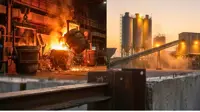Indian Railways will spend around Rs500 crore to build fences along the Delhi-Mumbai route to restrict human and cattle intrusion on railway tracks that slows down trains or causes accidents. These tracks can be used to run trains at speeds of up to 130 km per hour.
Trains on the 1,384-km Delhi-Mumbai route usually slow down because of the possibility of interference on the track and the construction of a boundary wall along the railway track between the two cities would help restrict human and cattle interference.
Railway officials said this is the first step towards converting the Delhi-Mumbai corridor into a high-speed zone, which will be followed by track changes. Trains running on this route will then be able to attain speeds of 160km per hour, the officials added.
Currently, the fastest train running between the two cities, the Rajdhani Express, takes 16 hours to cover the distance.
“The Railway Board has given its approval. A survey will now be conducted to identify the vulnerable areas where the wall needs to be constructed. The fencing will be done in the urban areas and near busy railway stations along the route. The move will help achieving on-time performance and reduce the number of accidents on the route,” the report quoted a senior railway official as saying.
Accidents are a common feature on this route and the 73 accidents recorded last year was perhaps the best railway safety record in 57 years on this route, point out officials.
Indian Railways is reported to be working on a plan to implement a similar model on the Delhi-Kolkata route.
Some of the major stations along the Delhi-Mumbai corridor like Mathura, Kota, Ratlam, Vadodara and Surat, besides areas in Uttar Pradesh, Rajasthan, Madhya Pradesh and Gujarat have been identified for fencing.
The height and design of the wall has not been decided yet but officials familiar with the development said that it will be an 8-10-feet-high concrete wall.
Experts described it as a much-needed move, and said it was standard practice in many countries.






















